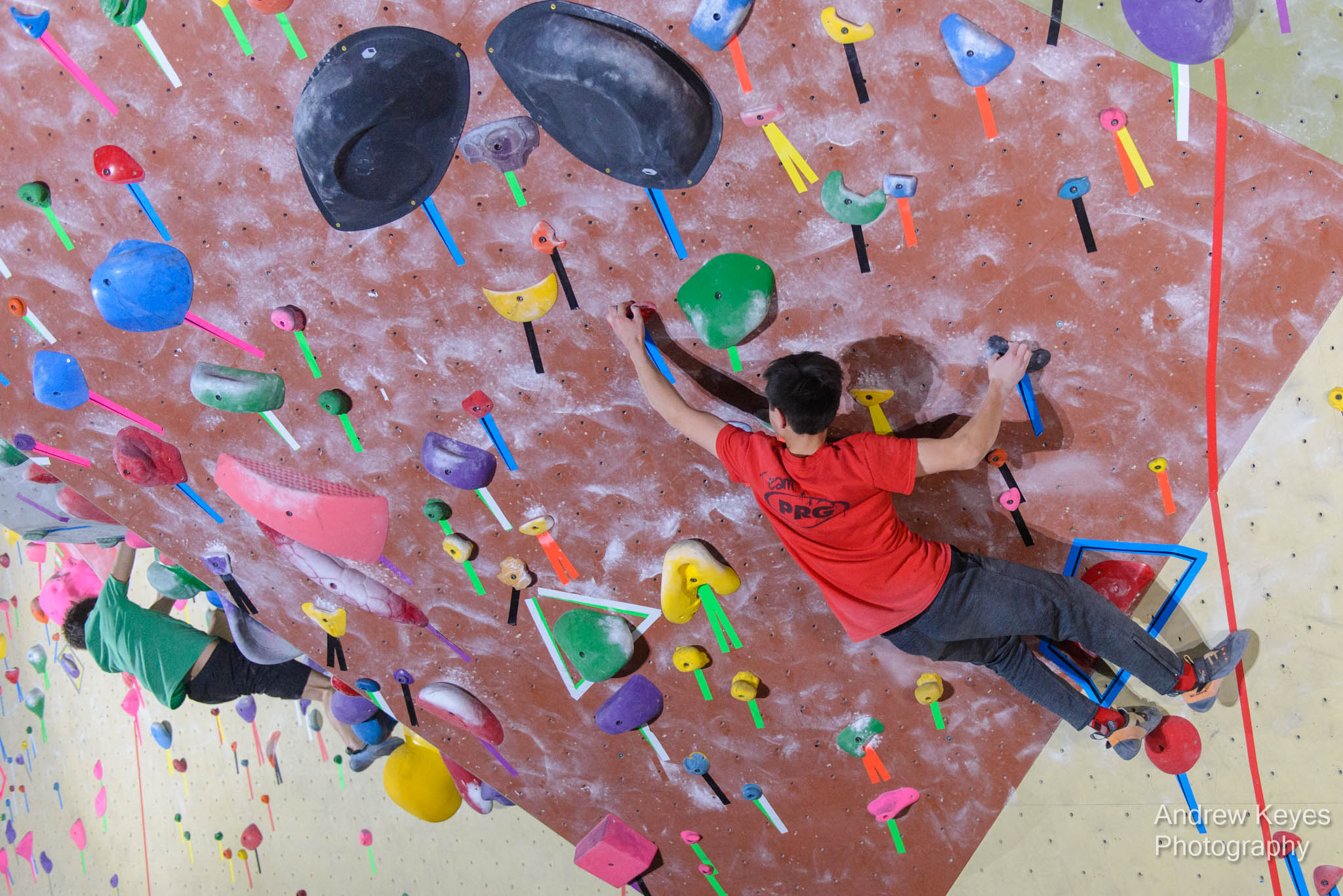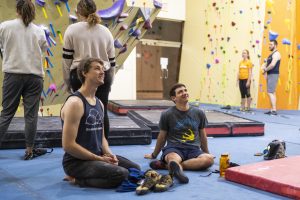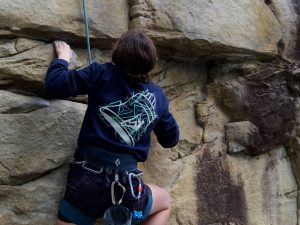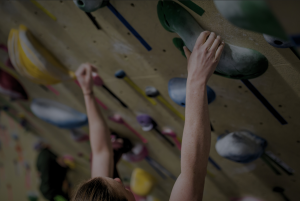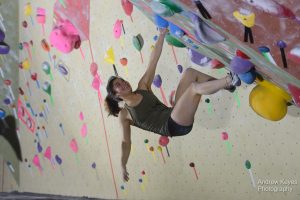Back-steps are the simplest version of a twist-lock. Being an advanced article, we will assume you know the basics of the back-step. If you need a refresher, here’s how to get into the back-step position.
Now, let’s focus on a few details which are important to keep in mind. The key areas we’ll be touching upon are shoe edges, heel positioning, efficient holds, and the location of footholds.
Inside Edge
First, if you look closely, you will notice an interesting difference between how you use your outside edge vs your inside edge in back-stepping.
When using the inside edge we twist our heel toward the wall, aiming to get our foot very nearly parallel to it. This allows us to keep our hips square, and to get our center of gravity almost directly over our heel by nearly touching the wall with our pelvis. This puts our center of gravity is as close as possible to the wall, and maximizes how much weight is on our foot.
Versus the Outside Edge
With an outside edge position, however, our anatomy limits how close we can get our center of gravity to the wall. When we twist into a back-step, our pelvis turns nearly perpendicular to the wall, and the hip-bone forces our center of gravity out a few inches.
In fact, placing your heel against the wall in a back-step (or a drop-knee) is counter-productive and typically feels awkward, as this will actually remove it from being directly under your center of gravity. As a result, when using the outside edge, there is no benefit in turning our heel all the way in to the wall.
In addition, when using your outside edge, the act of trying to turn your foot completely parallel to the wall will force your toes off of most footholds and leave you standing on the ball of your foot, on the outside. This is a poor balance point, and a point with much less friction and control than your toes.
Climbers who use this method will find their range of motion is limited, and that they tend to pop off footholds very easily.
Solution
Therefore, in a back-step, it is best to keep your heel at an angle to the wall. This allows your center of gravity to remain above your heel where you have the most control over your weight.
Efficient with Side-Pulls and Good Jugs
The second detail to keep in mind is that back-steps are generally only efficient when you are using a side-pull or a good jug.
This detail is a result of the position you end up in. One side of your body is twisted into the wall, and all of your weight is now leaning back and away from your pulling hand. This means that the force you are putting on the handhold will be to the side of your handhold, which is pretty much the definition of a side-pull.
More significantly, it is a poor way to pull on any other hold type. If you back-step while using a flat edge, then once you twist you will be pulling parallel to the major axis or along the edge of that hold, lowering your sticking power considerably.
If you are using a gaston, it’s even worse. You would literally being leaning away from the major axis, threatening to lift your hand right off the hold! Underclings are occasionally decent candidates for back-steps, but even here, we want to aim for holds that have a side-pull component, or again it will take way more upper body strength to maintain your grip than you would need using an inside edge.
Location of Foothold
Finally, in a back-step the location of your foothold, in relation to the handhold you are pulling off of, is very important. It is not immediately obvious why this is so.
First, though this is not always the case, in general back-steps work best on higher feet, typically knee height or more. This is because you get your weight on your heel by literally sitting on it, a position that requires a high enough foot to allow you to bend your knee. Too low a foot, as compared to your handhold, and bending your knee will not put your hips over your heel, and your power will suffer.
Second, and most important, a back-step should be used with footholds that are vertically in line with the handhold you are using (sometimes called the pivot point), or in front of that hold, as you turn your shoulder to the wall.
Footholds which are behind the line, or behind the handhold you are using as you turn your shoulder to the wall, are not generally good for back-stepping because of a phenomenon called “spin out”. Spin out is a phenomenon that feels similar to the barn door, but has a different underlying cause. We’ll cover that next.
All material is reprinted with the permission of the author. Copyright 2022 David H. Rowland. All rights reserved.


